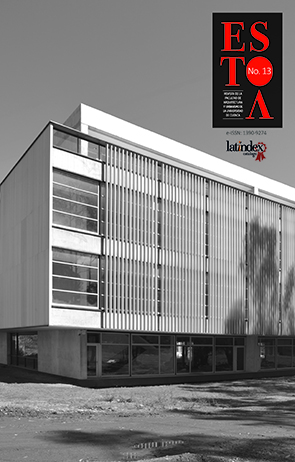Architecture is still useful? Is there any relationship with teaching?
DOI:
https://doi.org/10.18537/est.v007.n013.a12Keywords:
architecture, academy, teaching, society, universityAbstract
The current situation of the teaching architecture turns out to be worrying in the face of a changing and complex society. The career is sacrificed, frustrating, demanding and expensive. It requires a great motivation to face it, but… for what? Does the present society offer the opportunities in order that so much effort will be compensated ? It is not only about the economic sense, but mainly about the personal accomplishment of the architect, in the fulfillment of real objectives regarding the development of the activities that the legal framework allows us. Some colleagues share this concern and have done work on it. We make a brief analysis of the opinions of some of them and we relate them to the Ecuadorian context of the 21st century, specifically in the case of the Central University, Faculty of Architecture, in Quito. This paper is supported in a descriptive research, aimed to the protagonists of the architecture and teaching, a population that wants to reflect a coherent universe for the subject, and which consists of the processing of surveys and focus groups, developed from an initial theoretical reflection, answering specific questions. In the development of the article, we will try to summarize the most important of these references, and the results of the research carried out, to expose later some personal reflections that try to contribute to find solutions from the approach of teaching Architecture.
Downloads
References
Carrión Mena, F. (18 de marzo de 2014). La academia en su laberinto: los puntos, los rankings y la citación como normas de calidad. La línea de fuego (Blog). Recuperado de https: //lalineadefuego.info/2014/03/18
González Casanova, P. (2001). La universidad necesaria en el siglo XXI. México DF, México: Ediciones Era.
Franco, J.T. (2017). Handel Guayasamín: 'La universidad es inútil para actuar en procesos con los pobres, y eso es gravísimo'. Plataforma Arquitectura. Recuperado de https://www.plataformaarquitectura.cl/cl/867420/handel-guayasamin-la-universidad-es-inutil-para-actuar-en-procesos-con-los-pobres-y-eso-es-gravisimo
Rodríguez Aguirre, N. (2015): Gestión del conocimiento y pertinencia de la universidad para la transformación social. Revista Economía, 67 (106), 111–119.
Romero P. (21 de marzo de 2017). El 70% de las viviendas en Quito son informales y no cumplen con los reglamentos de construcción. Notimundo. Recuperado de https://notimundo.com.ec/el-70-de-las-viviendas-en-quito-son-informales-y-no-cumplen-con-los-reglamentos-de-construccion/
Tripaldi Proaño, A. M. (2014). La complejidad en la transformación de la educación superior del diseño, Caso: Diseño de Objetos de la UDA, Revista DISEÑO Y ARQUITECTURA: Una mirada a las disciplinas desde la academia, 8-19.
Zabalza,, M. A. (2009). Retos de la escuela del siglo XXI, desarrollo del trabajo por competencias. Revista HISTEDBR On-Line, (34), 3-18.
Presidencia de la República (12 de octubre de 2010). Ley Orgánica de Educación Superior (LOES). Decreto Ejecutivo 865, Registro Oficial, suplemento 298, Quito, Ecuador.
Presidencia de la República (2009). Ley del Ejercicio Profesional de la Arquitectura, Actualización, Suplemento del Registro Oficial 504, 12¬I¬2009, Quito, Ecuador.
Published
How to Cite
Issue
Section
License
The Journal declines any responsibility for possible conflicts derived from the authorship of the works that are published in it.
The University of Cuenca in Ecuador conserves the patrimonial rights (copyright) of the published works and will favor the reuse of the same ones, these can be: copy, use, diffuse, transmit and expose publicly.
Unless otherwise indicated, all contents of the electronic edition are distributed under a Creative Commons Attribution-NonCommercial-ShareAlike 4.0 International License.




